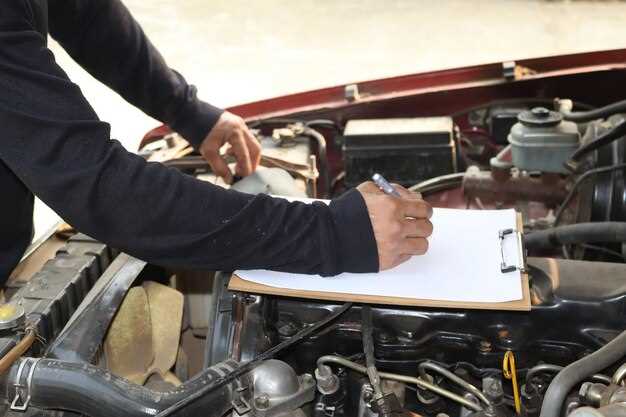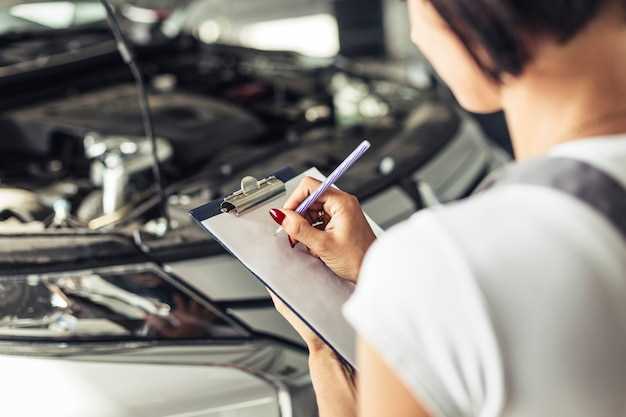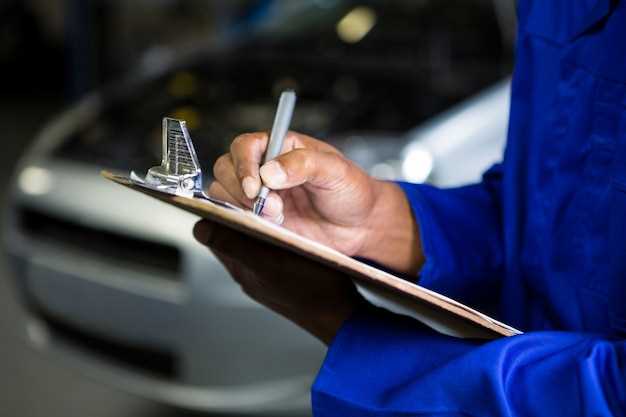
Buying a used Dodge Charger can be an exciting venture, especially for those who appreciate the power and performance of this iconic muscle car. However, ensuring that you make a wise purchase involves more than just a test drive and a quick visual inspection. It’s essential to approach the buying process with a thorough checklist in hand to evaluate the vehicle’s condition and history.
Before finalizing the purchase, prospective buyers should methodically assess various aspects of the used Dodge Charger. Pay close attention to the engine, transmission, suspension, and bodywork, as these components are crucial indicators of the vehicle’s overall health. Additionally, understanding the car’s history, including any accidents or service records, can provide valuable insights into how well it has been maintained.
By following a structured checklist during your inspection, you can minimize the risks associated with buying a used vehicle. This ensures that you not only protect your investment but also enjoy the thrill of driving a Dodge Charger that meets your expectations in performance and reliability.
Key Exterior Features to Assess on a Used Charger
When evaluating a used Dodge Charger, several key exterior features deserve careful examination. Having a detailed checklist will help you ensure that the vehicle is in good condition and meets your expectations.
1. Body Condition: Inspect the Charger’s body for any signs of rust, dents, or scratches. Pay special attention to the wheel wells and the lower panels, as these areas are prone to corrosion. A thorough examination can reveal how well the car has been maintained.
2. Paint and Finish: Evaluate the quality of the paint job. Look for consistent color and texture throughout the vehicle. Uneven paint might indicate past accidents or repairs. Additionally, check for faded areas that could suggest wear and tear from UV exposure.
3. Lights: Test all exterior lights, including headlights, taillights, turn signals, and fog lights. Ensure they operate correctly and are free from cracks or condensation. Working lights are crucial for safety and visibility.
4. Windows and Mirrors: Inspect the condition of all windows and mirrors. Look for chips, cracks, or signs of tint that may be peeling. Functionality is key; ensure that power windows and mirrors operate smoothly and without any unusual noises.
5. Tires: Check the tires for tread depth and even wear. Inspect for any cracks or bulges on the sidewalls, which may indicate structural issues. Don’t forget to verify that the spare tire and jack are present and in good condition.
6. Trim and Accessories: Examine the trim pieces and any added accessories such as spoilers or custom grilles. These elements should be intact and feature a quality finish. Missing or damaged accessories can affect the overall aesthetic and value of the vehicle.
7. Undercarriage: If possible, take a look at the undercarriage. Look for any signs of leaks, rust, or damage. A well-maintained undercarriage is crucial for long-term vehicle health.
Using this checklist, you can effectively assess the exterior features of a used Dodge Charger, ensuring that you make an informed purchase decision.
Important Mechanical Components to Inspect Thoroughly

When considering the purchase of a used Dodge Charger, a thorough inspection of its mechanical components is crucial. This ensures that you make a wise investment and avoid potential issues down the line. Below is a detailed checklist of essential components to assess.
1. Engine Condition
Start your inspection by examining the engine. Check for any signs of leaks, rust, or unusual noises. It’s essential to look at the oil quality; dark or gritty oil may indicate inadequate maintenance. Verify that the oil level is within the recommended range, and inspect the engine for any signs of wear or damage.
2. Transmission
Check the transmission fluid, ensuring it is at the appropriate level and not burnt or discolored. Test the transmission shifts smoothly during a test drive. Unusual jerking or slipping could signify underlying problems that may require expensive repairs.
3. Braking System
The braking system is vital for safety. Inspect brake pads for wear and check the rotors for warping or scoring. Also, examine the brake fluid level and look for any leaks around the brake lines. Testing the brakes during a drive will help assess their responsiveness.
4. Suspension and Steering
Evaluate the suspension by checking for excessive play in the steering wheel and listening for any unusual sounds when navigating bumps. Inspect the shocks and struts for leaks or damage. A well-functioning suspension should provide a smooth ride and maintain vehicle stability.
5. Tires
Examine the tires for tread depth, uneven wear, and sidewall damage. Adequate tread is crucial for traction and safety. Ensure that the tires are inflated to the correct pressure and consider checking the alignment if there are signs of irregular wear.
6. Exhaust System
Inspect the exhaust system for any signs of rust, holes, or hanging components. A healthy exhaust system should operate quietly without excessive emissions. Listen for unusual sounds during operation, which may indicate a problem with the muffler or catalytic converter.
7. Battery and Electrical System
Check the battery for corrosion on the terminals and ensure the connections are secure. Test the electrical components such as lights, indicators, and dashboard electronics to ensure everything functions properly. A weak battery can lead to starting issues and should be replaced if necessary.
In conclusion, conducting a meticulous inspection of these mechanical components will provide valuable insights into the condition of the used Dodge Charger. Utilizing this checklist will help you identify potential problems and make an informed decision on your purchase.
Evaluating the Vehicle’s History and Documentation

When considering a used Dodge Charger, evaluating the vehicle’s history and documentation is crucial to ensure a wise purchase. A thorough checklist can help you determine the car’s condition and its past, thereby reducing the risk of future issues.
Start by obtaining the Vehicle Identification Number (VIN). This unique code allows you to access comprehensive reports from services such as Carfax or AutoCheck. These reports provide essential information, including accident history, title status, and service records, which are vital for assessing the vehicle’s background.
Next, request maintenance records from the seller. Regular maintenance is a strong indicator of a well-cared-for vehicle. Look for documentation of oil changes, tire rotations, and any repairs made. Ensuring that the previous owner kept up with standard maintenance can give you confidence in the vehicle’s reliability.
Additionally, check for any recalls associated with the specific model year of the Charger. Manufacturers periodically issue recalls for safety defects, and it is important to confirm whether any outstanding recalls have been addressed.
Another aspect to consider is the title history. Ensure the title is clean and free from liens or major issues. A salvage title, for example, indicates that the vehicle has been significantly damaged and may require further investigation.
Lastly, consider obtaining a pre-purchase inspection from a trusted mechanic. This inspection can uncover hidden problems that may not be apparent through documentation alone. A professional’s perspective can provide invaluable insight into the condition of the vehicle.
By utilizing this checklist to evaluate the used Dodge Charger’s history and documentation, you can make a more informed decision and better protect your investment.




